ATTRACTIONS
[slide-anything id=’18169′]Sydney The city is among the top fifteen most-visited cities in the world, with millions of tourists coming each year to see the city’s landmarks. Boasting over 1,000,000 ha (2,500,000 acres) of nature reserves and parks, its notable natural features include Sydney Harbor, the Royal National Park, Royal Botanic Garden and Hyde Park, the oldest parkland in the country. Built attractions such as the Sydney Harbor Bridge and the World Heritage-listed Sydney Opera House are also well known to international visitors. The main passenger airport serving the metropolitan area is Kingsford-Smith Airport, one of the world’s oldest continually operating airports. Established in 1906, Central Station, the largest and busiest railway station in the state, is the main hub of the city’s rail network.
Melbourne 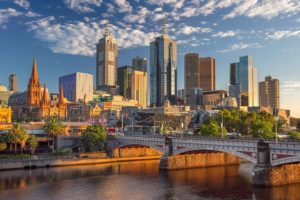 The city is home to many of the best-known cultural institutions in the nation, such as the Melbourne Cricket Ground, the National Gallery of Victoria and the World Heritage-listed Royal Exhibition Building. It is also the birthplace of Australian impressionism, Australian rules football, the Australian film and television industries and Australian contemporary dance. More recently, it has been recognized as a UNESCO City of Literature and a global center for street art, live music and theater. It is the host city of annual international events such as the Australian Grand Prix, the Australian Open and the Melbourne Cup, and has also hosted the 1956 Summer Olympics and the 2006 Commonwealth Games. Due to it rating highly in entertainment, tourism and sport, as well as education, health care, research and development, the EIU currently ranks it the second most livable city in the world. Melbourne is the second-most-populous metropolitan/urban area in Australia.
The city is home to many of the best-known cultural institutions in the nation, such as the Melbourne Cricket Ground, the National Gallery of Victoria and the World Heritage-listed Royal Exhibition Building. It is also the birthplace of Australian impressionism, Australian rules football, the Australian film and television industries and Australian contemporary dance. More recently, it has been recognized as a UNESCO City of Literature and a global center for street art, live music and theater. It is the host city of annual international events such as the Australian Grand Prix, the Australian Open and the Melbourne Cup, and has also hosted the 1956 Summer Olympics and the 2006 Commonwealth Games. Due to it rating highly in entertainment, tourism and sport, as well as education, health care, research and development, the EIU currently ranks it the second most livable city in the world. Melbourne is the second-most-populous metropolitan/urban area in Australia.
Great Barrier Reef 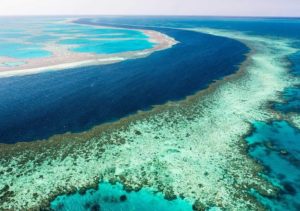 The Great Barrier Reef is the world’s largest coral reef system composed of over 2,900 individual reefs and 900 islands stretching for over 2,300 kilometers over an area of approximately 344,400 square kilometers. The reef is located in the Coral Sea, off the coast of Queensland, Australia. It was designated a World Heritage site in 1981.
The Great Barrier Reef is the world’s largest coral reef system composed of over 2,900 individual reefs and 900 islands stretching for over 2,300 kilometers over an area of approximately 344,400 square kilometers. The reef is located in the Coral Sea, off the coast of Queensland, Australia. It was designated a World Heritage site in 1981.
Sydney Opera House 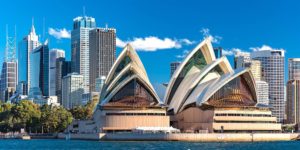 The Sydney Opera House is a multi-venue performing arts center at Sydney Harbour in Sydney, New South Wales, Australia. It is one of the 20th century’s most famous and distinctive buildings. Though its name suggests a single venue, the building comprises multiple performance venues which together host well over 1,500 performances annually, attended by more than 1.2 million people. Performances are presented by numerous performing artists, including three resident companies: Opera Australia, the Sydney Theatre Company and the Sydney Symphony Orchestra. As one of the most popular visitor attractions in Australia, the site is visited by more than eight million people annually, and approximately 350,000 visitors take a guided tour of the building each year.
The Sydney Opera House is a multi-venue performing arts center at Sydney Harbour in Sydney, New South Wales, Australia. It is one of the 20th century’s most famous and distinctive buildings. Though its name suggests a single venue, the building comprises multiple performance venues which together host well over 1,500 performances annually, attended by more than 1.2 million people. Performances are presented by numerous performing artists, including three resident companies: Opera Australia, the Sydney Theatre Company and the Sydney Symphony Orchestra. As one of the most popular visitor attractions in Australia, the site is visited by more than eight million people annually, and approximately 350,000 visitors take a guided tour of the building each year.
The Sydney Harbour Bridge 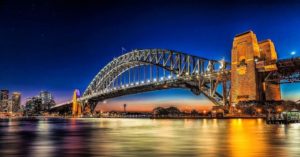 The Sydney Harbour Bridge is a heritage-listed steel through arch bridge across Sydney Harbour that carries rail, vehicular, bicycle, and pedestrian traffic between the Sydney central business district (CBD) and the North Shore. The dramatic view of the bridge, the harbour, and the nearby Sydney Opera House is an iconic image of Sydney, and Australia itself. The bridge is nicknamed “The Coathanger” because of its arch-based design. It is the sixth longest spanning-arch bridge in the world and the tallest steel arch bridge, measuring 134 m (440 ft) from top to water level. It was also the world’s widest long-span bridge, at 48.8 m (160 ft) wide, until construction of the new Port Mann Bridge in Vancouver was completed in 2012.
The Sydney Harbour Bridge is a heritage-listed steel through arch bridge across Sydney Harbour that carries rail, vehicular, bicycle, and pedestrian traffic between the Sydney central business district (CBD) and the North Shore. The dramatic view of the bridge, the harbour, and the nearby Sydney Opera House is an iconic image of Sydney, and Australia itself. The bridge is nicknamed “The Coathanger” because of its arch-based design. It is the sixth longest spanning-arch bridge in the world and the tallest steel arch bridge, measuring 134 m (440 ft) from top to water level. It was also the world’s widest long-span bridge, at 48.8 m (160 ft) wide, until construction of the new Port Mann Bridge in Vancouver was completed in 2012.
ADVENTURE
Australia and its surroundings deserve a place on your bucket list. From surreal rainforests and diverse wildlife, to the amazing marine biosphere, watersports, and various activities. The sublime coast is perfect for beach holidays and whale watching. Savour wines in the Hunter Valley and other wine regions. Explore nation-making heritage in country towns, and enjoy the amazing Blue Mountains and the spectacular Snowy Mountains. There are wonderful art exhibitions and fabulous concerts, bustling farmers markets and traditional agricultural shows, as well as thrilling sports and much more. Enjoy a spectacular array of events, from the iconic Tamworth Country Music Festival to tasty festivals in the wine regions.
With Australia’s wildlife of 570,000 different living species, from cassowaries to sugar gliders, landscapes that span from rugged mountain ranges to tropical rainforests, and activities as different as SCUBA diving and bungee jumping, it’s no wonder that this island-continent attracts more than six million visitors each year. The Land Down Under will please adrenaline junkies, environmental enthusiasts, culture lovers, and everyone else who wants to experience the Aussie lifestyle.
One of the top adrenaline activities in the world is to get in The Cage Of Death With A Saltwater Crocodile and Cage Diving With Great Whites Sharks – hopping into a steel cage to be plunged into crocodile and shark infested waters is truly a heart pumping experience. The first things you think about when somebody mentions Australia is Climbing The Sydney Harbour Bridge for the amazing panoramic view and photo opportunities. There are plenty of other Outback adventures to be had, and top of that list would be kayaking through the Northern Territory’s Katherine Gorge. One of Australia’s best driving roads is the Great Ocean Road and driving it makes for one heck of an adventure. Snorkel With Whale Sharks At Ningaloo Reef These gentle giants are the biggest fish in the ocean and live entirely on a diet of plankton – so there is no scary sharp teeth. All these are just a small piece of Australia’s adventure world! If you wish to encounter waddling penguins, you can go to the Phillip’s Island. And how does zip lining through the rainforests sound like? Tourism to Australia’s Islands has really developed and with a well-established ferry boat system and daily excursions, you can go anywhere you’d like. Want to experience a view from above? There are even helicopter tours or a ride in a hot air balloon. Basically, if you can imagine it – Australia has it.
THE PEOPLE
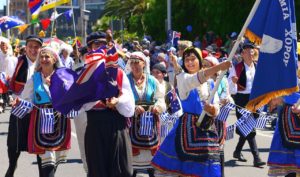
Australians, colloquially known as Aussies, are citizens and nationals of the Commonwealth of Australia, although some dual citizens, expatriates and permanent residents may also claim Australian nationality. Home to people of many different ethnic origins, religious and national origins, the Australian culture and law does not correspond nationality with race or ethnicity, but with citizenship and loyalty to the country. Despite the fact that over half of the citizens descend from the peoples of the British Isles. Australia is a multicultural society and has the world’s ninth-largest immigrant population, with immigrants accounting for 26% of the population.
“Aussie” is a colloquialism that was used during World War I to refer to Australian-born people of British or Irish ancestry. Initially used to describe a happy-go-lucky character capable of battling through hard times, the term was employed after World War II to distinguish those born domestically from “new” immigrants from western and southern Europe. The term continues to have meaning as a label for Australians representing their country. Among some sectors of society, “Aussie” is regarded as Eurocentric and anachronistic in a nation officially committed to ethnic and racial inclusiveness.